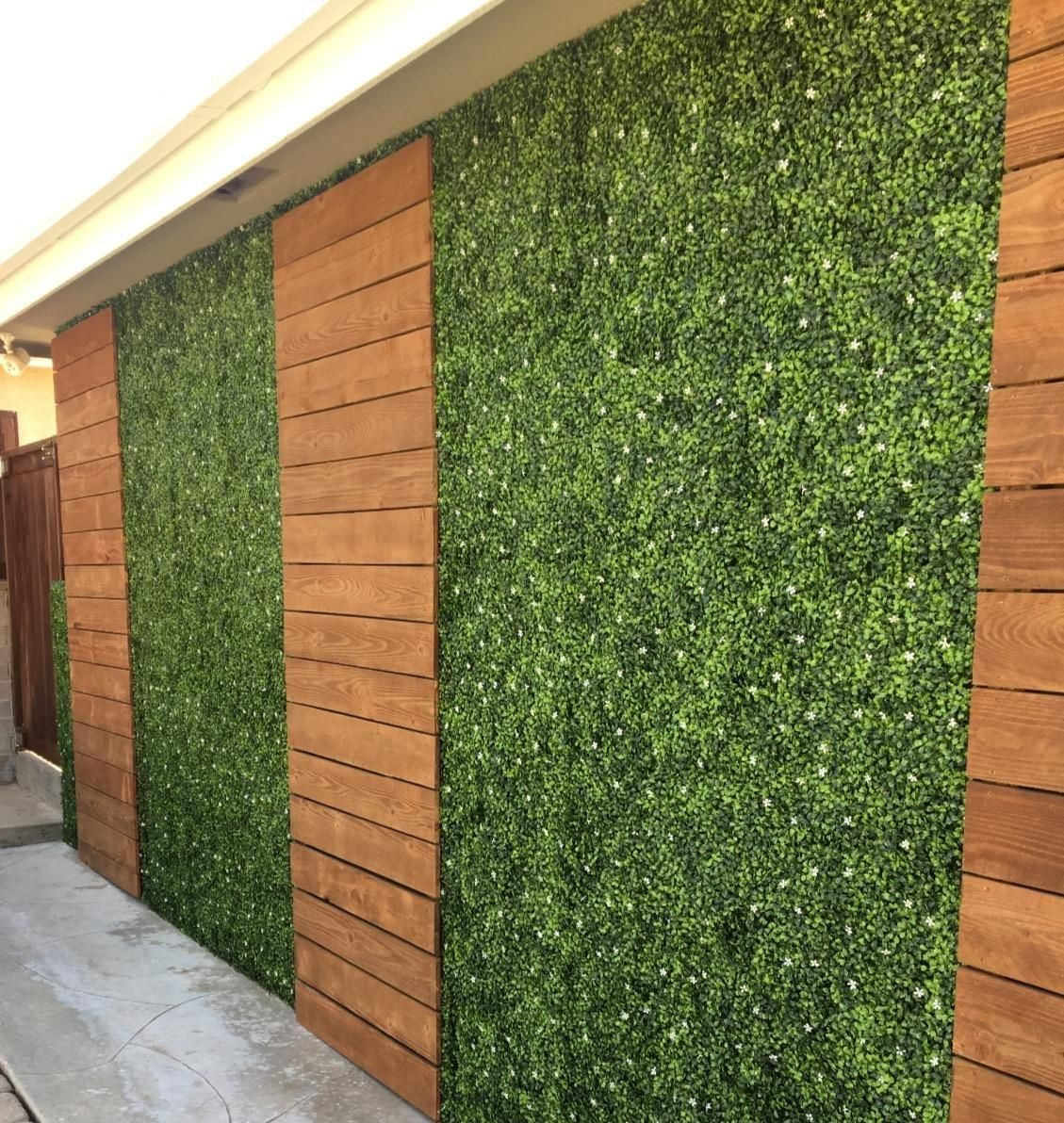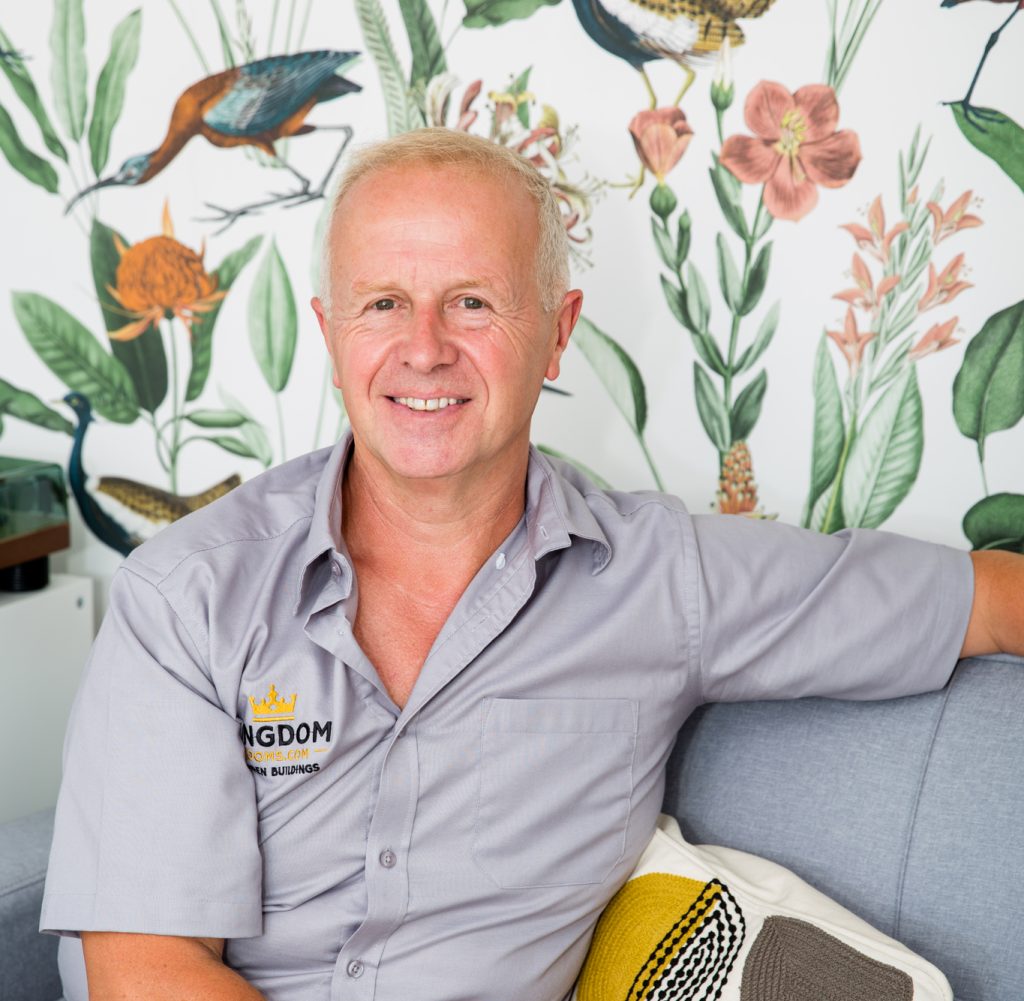The notion of creating a personal outdoor escape has been gaining traction for a few years now, and there are so many reasons why. From adding visual interest to your garden to providing a quiet space to read, paint or workout, to even adding an additional room to your property for guests or as an at-home office, garden rooms offer a multitude of uses.
But, if you can design your garden room in a sustainable way, to enable you to enjoy your personal retreat without harming the environment, so much the better. From thinking about the materials you build your garden room with to how to furnish your new space, here are a few tips for decorating in a sustainable way.
Create an Eco-Friendly Gallery Wall
A gallery wall adds personality and visual interest to your space, and there are ways to decorate with art and photography in a sustainable way. For example, you could try your hand at creating your own artwork—a plastered wall is an ideal surface for murals and you could update the subject matter at any time, depending on your mood or the season.
You could also buy used frames at a fraction of the cost of new ones and fill them with your own travel snaps or photos of your family and friends. Why not edit them to create a stylish black and white gallery wall,or choose a theme to create a curated look?

Go for Energy-Efficient Lighting
Lighting is so important for setting the right mood and also for making sure the room is functional. Think about the way you’ll be using the space before choosing your lighting, as the ambiance will differ depending on its purpose. For example, an office needs bright light, and plenty of it, to ensure you can see clearly and have visibility for online meetings. But if you intend to use it as a restful retreat for yoga or meditation, you might want softer lighting that adds an ambient glow.
Choose LED bulbs and energy-efficient fixtures to minimise your energy consumption, and consider using solar-powered lights outside to illuminate the space without the need for electricity. Natural light is also crucial, so consider where you place windows and skylights to reduce the need for artificial light throughout the day.
Use the Furniture You Already Have
Often, we have items around the home that could live out a second life and get more use elsewhere, so when you’re designing your garden room, think about what you already have. Maybe the sofa bed you have in the spare room could be used as a cosy reading nook in your new office, or perhaps you already own a desk that barely gets used in the house but would be perfect as a vanity for an outdoor retreat. If you know which pieces you want to repurpose, your builder can factor these into the dimensions when designing the room to allow for getting them in once it’s complete.
Thanks to Annie Button for this inspirational piece.
Meet Andy from Kingdom Rooms
Andy Young is the managing Director of Kingdom Rooms and started the company over 10 years ago!
Andy has a wealth of knowledge on regulations and law when it comes to all extensions not just Garden Buildings! Simply Call Andy for an informal chat if need some advice or information


Consider the Type of Flooring you Choose
Choosing the right flooring is important not just for aesthetics but also practicality. Pre-owned flooring comes in a range of styles, from tiles and timber to laminate and carpet. However, be careful when choosing the material for the base of your garden room, as uninsulated concrete floors will allow the cold to transfer. Similarly, carpet might absorb the humidity from the heating above and this may cause damp and mould if there’s a solid base beneath.
Whatever option you choose, ensure it’s treated with low-VOC sealants and finishes to maintain good indoor air quality. It can also be beneficial to add rugs to your floors to absorb internal noise and add warmth underfoot. Just remember to add a mat outside to prevent tracking mud and grass into the room.
Choose Green Ornaments and Accessories
Bring life and vibrancy to your garden room with green adornments and accessories. For example, you could install a living wall to purify the air and create a stunning visual focal point. Terrariums and a variety of indoor plants can add pops of colour and natural beauty throughout the space too. Adding greenery to the room blends the space with the rest of your garden and is the perfect sustainable décor.
Don’t Neglect Climate Control and Insulation
As an external structure, you need to ensure your garden room is comfortable and warm year-round. Climate control and insulation methods are the most effective way to keep the interior of the building cosy and also prevent condensation and mould from developing.
Be sure to install double-glazed windows to improve the thermal efficiency and prevent heat loss, and use natural fibre insulation like sheep’s wool in the walls and ceiling to maintain a consistent temperature. Green roofing, like a grass or sedum roof, is another option to provide natural insulation and also reduce rainwater run-off.
Implement Water Conservation Features
The outside of your garden room is just as important as the inside, and there are ways to make this area of your outdoor space sustainable too. For example, why not consider rain harvesting techniques like a water butt to capture rainfall that can be used to water your garden? If you have a water feature, a low-flow design can also help to recirculate the water and minimise consumption. Coupled with a well-designed garden with local plants and drought-tolerant shrubs, your garden will look beautiful and require less upkeep.
Remember that creating an eco-friendly garden room is an ongoing process – you will no doubt continue to find new ways to decorate as you spend time enjoying your beautiful retreat. But hopefully these ideas serve as a starting point, helping you to design a garden room that reflects your style and values, providing a harmonious connection between indoor comfort and outdoor beauty.

Get in touch today so we can help you design your dream garden room.








